Meet the 2020 Award Winners
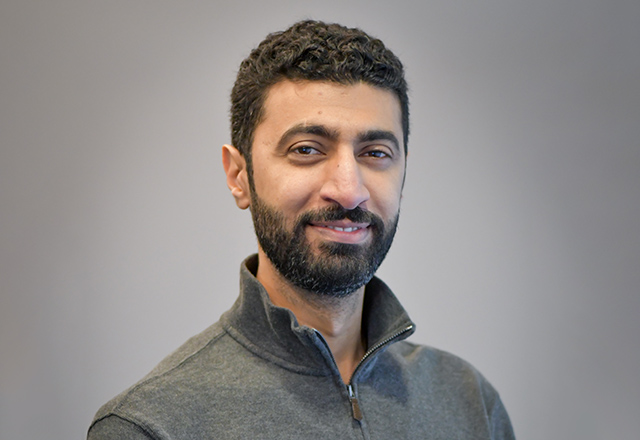
Ali Afify
Alfred Blalock Award
Please describe your research discovery.
Mosquito repellents are used worldwide to prevent mosquito bites and mosquito-borne diseases. In order to develop more efficient and safer mosquito repellents, we first need to understand how currently used repellents work, or how they affect the mosquito’s sense of smell. At the Potter lab, we developed a method (calcium imaging) to visualize how sensory neurons on the antennae of the malaria mosquito respond to repellents. We found that natural repellents, such as lemongrass oil and eugenol, are able to activate some of these neurons. To our surprise, man-made repellents such as DEET did not activate any of these antennal neurons. This suggests that the malaria mosquito can smell natural repellents but not man-made repellents. We found that man-made repellents work in another way: They make neurons on the mosquito antennae respond less (or not at all) to the odors on our skin by decreasing the volatility of these odors. This means that instead of directly repelling the malaria mosquitoes away, man-made repellents prevent chemicals on our skin from evaporating and reaching the mosquitoes, rendering us invisible to them. We further showed that other species of mosquitoes, such as the yellow fever mosquito and the southern house mosquito, are directly repelled by DEET. This suggests that confusion in the field about how DEET works could be due to its species-specific effect. Our findings can help inform mosquito repellent choice by species, and streamline the discovery of improved insect repellents.
Why did you choose Johns Hopkins for your work?
Johns Hopkins is one of the best research universities in the world. In addition, the lab was a perfect fit for me, and proved to be an excellent choice.
What does receiving this award mean to you personally and professionally? Do you have any connection with the particular award you received?
The award means a lot to me, and I hope it will help my career in the future. I do not have any connection with the particular award I received, but I am honored to receive an award named after a great scientist like Alfred Blalock.
What contributed to your project's success?
The work environment in the Potter lab is the main contributor to my project’s success. I continuously receive great support from my mentor and colleagues, and I really appreciate every one of them.
What thoughts do you have about Young Investigators’ Day itself, as a celebration of the roles students and fellows play in research at Johns Hopkins?
I think it is a great way to recognize the excellent research done by young investigators at Johns Hopkins. We tend to doubt ourselves sometimes, and it really helps when we feel that our work is recognized. Things like the Young Investigators' Day can make us feel appreciated, and hopefully will inspire future young investigators who are just starting their projects at Johns Hopkins.
What has been your best/most memorable experience while at Johns Hopkins?
I think it was when my paper was finally published after more than three years of work.
What are your plans over the next year or so?
I plan to stay in academia. I want to find a faculty position one day.
Tell us something interesting about yourself.
I love writing; the best time during my Ph.D. was when I was writing my thesis. I could not stop there, so I used the few months after graduation to write a novel, and I enjoyed every moment in the process.

Rizwan Ahmed
Paul Ehrlich Award
Please describe your research discovery.
Type 1 diabetes (T1D) is a major childhood autoimmune disease that results from the destruction of insulin-producing beta cells by islet-reactive T cells, making patients dependent on insulin replacement for survival. However, insulin replacement is not a cure, and many patients suffer long-term complications, including cardiovascular, renal ones, as well as neuropathy. We hypothesize that the lack of therapy to protect at-risk individuals or to slow loss of beta cells in newly diagnosed patients result from a lack of key information regarding how the disease develops.
I am doing my research at Abdel-Rahim A. Hamad’s lab, in the Department of Pathology. We have discovered a new adaptive immune cell that combines lineage characteristics of both B and T cells and clonally expanded in Type 1 diabetes patients. We refer to these hybrid lymphocytes as dual expressers (DEs) because they co-express the B cell receptor (BCR) and the T cell receptor (TCR), and we generally call them “X cells” to denote their crossover phenotype. Phenotypic and functional characteristics of X cells, which we recently published in the prestigious journal Cell, are expected to open a new line of research that can lead to new breakthroughs in the field of autoimmunity. We believe they are relevant not only to Type 1 diabetes, but also to other autoimmune diseases, such as multiple sclerosis and lupus.
Briefly, our findings indicate that the X cells are major drivers of Type 1 diabetes by bearing an insulin mimic that cross-stimulates insulin-reactive T cells that go on to infiltrate pancreas and destroy insulin-producing beta cells. We believe these findings — together with our ongoing research — are preparing the platform for developing a biomarker that helps screen individuals at risk for developing Type 1 diabetes at very early age, possibly at birth. It could lay the groundwork for developing immunotherapies that target X cells for elimination for protecting at-risk individuals.
Why did you choose Johns Hopkins for your work?
I was passionate about joining Johns Hopkins because of their history of scientific excellence and world-renowned groundbreaking research. The research at Hopkins is very exciting and stimulating, and I chose this institution because I wanted to be challenged and learn as much as possible. Additionally, Hopkins is recognized for its excellent research resources and collaborative environment. After spending five years at Hopkins, I can say that Hopkins is indeed a bountiful place, where anyone can turn their innovative ideas into discovery. I love Johns Hopkins, and I am proud to be part of this institution.
What does receiving this award mean to you personally and professionally? Do you have any connection with the particular award you received?
The truth is, failure and success are linked. Chances are, you will fail (black dots) several times before you achieve your goals. Looking back, I can now reconnect all my dots that, I believe, shaped me to get this Paul Ehrlich Award. I started my Ph.D. research with the ultimate focus on investigating monoclonal antibodies’ “magic bullet” as a diagnostic and/or therapeutic tool to target diseases. My Ph.D. research and experiences helped me at Hamad’s lab to discover a new lymphocyte and a new set of monoclonal antibodies produced by X cells and appears to play a critical role in instigating development of Type 1 diabetes. Paul Ehrlich popularized the concept of “magic bullet” as an immunotherapy, and this award in his name feels particularly fitting and correlates with my research promises. I feel honored and humbled for receiving this award, and it is a huge motivator for me to continue pursuing a career in research.
What contributed to your project's success?
This journey was among the most challenging ones of my academic career. With this project, we asked a paradigm-shifting, fundamental question that would change the field of immunology. It was not an easy road, as this project went through many challenges before reaching success. I owe this success to my mentor, Dr. Hamad, whose guidance, continuous support and encouragement certainly paved the way to reach the goal. He believed in me and trusted me to lead this important project, but he also taught me about what’s important (both personally and professionally). The biggest lesson I learned is that “knowledge” will benefit your idea, but believing in your idea is the most critical step on the path to success. Additionally, I was also fortunate to have a smart, cohesive team and a creative, collaborative working environment that positively impacted my project. I also owe a special thanks to my family, teachers and friends for their support, which helped me overcome every obstacle.
What thoughts do you have about Young Investigators’ Day itself, as a celebration of the roles students and fellows play in research at Johns Hopkins?
A goal and a vision are only dreams, unless you take consistent action to bring them to life. Motivation is one of the many things that keeps us going and lets us continue to strive for our dreams. Young Investigators’ Day sparks this motivation by recognizing and encouraging the young researchers for their great contributions to research excellence at Johns Hopkins. I am grateful to have been selected and will keep working tirelessly to contribute to significant research advances in science.
What has been your best/most memorable experience while at Johns Hopkins?
It’s been five years since I joined Hopkins, but I still remember my first day here and my first meeting with Dr. Hamad. It’s difficult to choose one moment, but I would say that each day working with Dr. Hamad was exciting and fascinating. It was something I never thought would happen. I particularly enjoyed the scientific discussions that I’ve had with Dr. Hamad and my colleagues that not only get my adrenaline going, but also entice my appetite for doing exciting (and sometimes poking) experiments. I will never forget Dr. Hamad’s constant reminder: “Rizwan, you are almost there,” whenever I felt my goal to be unattainable.
What are your plans over the next year or so?
I have plans to finish up the current projects (including my own research grant, which was recently approved from the DRC Foundation), and I’m looking forward to establishing myself as an independent faculty member.
Tell us something interesting about yourself.
I like the idea of playing with ideas and juxtaposing things and then seeing what happens. I don’t do it all the time — I wish I could! — but I feel that this is one of the things I enjoy about science and is sort of musical to me. In my free time, I like reading, listening to music and channeling my imagination through graphic illustration and architectural design.
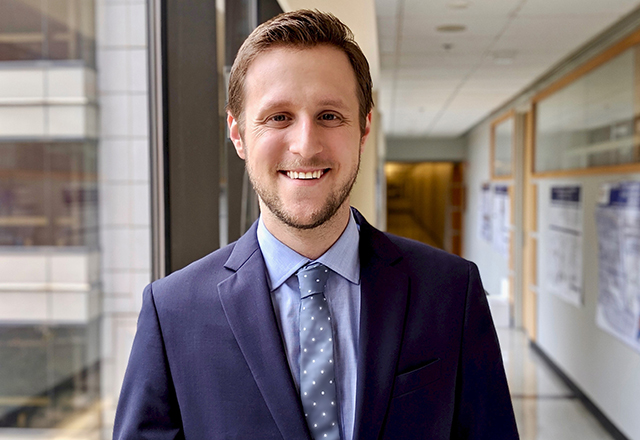
Scott Albert
Mette Strand Award
Please describe your research discovery.
Every movement begins and ends in a period of stillness. In the Laboratory for Computational Motor Control (the Shadmehr Lab), we study how the brain controls these different periods of motor activity. While decades of research have demonstrated that one area of the brain, the primary motor cortex, is critical for the execution of a movement, we know comparatively little about how the brain holds the arm still in a desired posture. In our recent work, we wondered if the brain holds the arm still using a strategy similar to that of the eye. For the eye, there are some neurons that produce a “moving” signal that corresponds to the velocity of the eye. However, there is a separate set of neurons that produce a “holding” signal that corresponds to the position of the eye. Much like the formula “distance equals rate multiplied by time,” the holding neurons calculate the “holding” signal by mathematically integrating the “moving” signal over time. Through a sequence of experiments involving over 200 healthy humans, 14 stroke patients, and four non-human primates, we discovered that a very similar integration process is used to hold the arm still. Critically, because reach integration was unimpaired in patients who suffered from cortical strokes, our work suggests that there are separate areas of the brain that move the arm and hold the arm still, as for the eye. These findings may help us understand why some neurological conditions can lead to impairment in movements and abnormal postures.
Why did you choose Johns Hopkins for your work?
When choosing a graduate program, Johns Hopkins stood out to me as an institution where biomedical research is truly intertwined with clinical practice. As a biomedical engineering student, I was afforded the chance to study the brain alongside first-year medical students, learning how to understand and treat the part of the body at the center of my work. Also, I knew that working at an institution where there are so many people that are better than me would be the best environment to train and form lifelong collaborations.
What does receiving this award mean to you personally and professionally? Do you have any connection with the particular award you received?
It is humbling to have contributed an idea that may help neuroscientists to understand how the brain controls our movements. Others in my lab have also been designated with this award, and I am very proud to be continuing that legacy. Mette Strand, Ph.D., was a pioneer in developing new treatments for parasitic diseases, HIV and cancer. As a cancer patient who was successfully treated for Hodgkin’s lymphoma during my graduate studies, it means a lot to be honored in the name of someone who worked so tirelessly to save the lives of so many people.
What contributed to your project's success?
This work was made possible by an incredible array of individuals, and a collaboration across several universities including Johns Hopkins (Reza Shadmehr, Jihoon Jang, Alkis Hadjiosif and John Krakauer), Newcastle University (Demetris Soteropoulos and Stuart Baker) and Columbia University (Andrew Zimnik and Mark Churchland). In addition, we benefited from the generosity of many stroke patients who all contributed their time to this work. Fittingly, this work was built on the ideas of an incredible neuroscientist, David Robinson, who helped found the Department of Biomedical Engineering at Johns Hopkins but unfortunately passed away before we could show him the similarities between the arm and the eye.
What thoughts do you have about Young Investigators’ Day itself, as a celebration of the roles students and fellows play in research at Johns Hopkins?
I have had the fortunate opportunity to attend the Young Investigators’ Day ceremony several times in the past. Even as an audience member, I have always found the day to be incredibly inspiring, and a great reminder of the incredible breadth of talent possessed by the trainees at Johns Hopkins, as well as the way our school supports their success.
What has been your best/most memorable experience while at Johns Hopkins?
In the Shadmehr Lab, I have immensely benefited from the camaraderie of my fellow trainees. As a close-knit scientific family, we have lunch together each and every day, where we talk about our lives, our interests, and of course, the brain. I will forever miss this time spent clamoring around the table in Traylor 416.
What are your plans over the next year or so?
I am fortunate to have recently defended my dissertation, and to have accepted an offer to become a postdoctoral fellow continuing in the Laboratory for Computational Motor Control. After this, I plan to continue my postdoctoral studies at a different institution while further developing new skills in the study of the neural control of movement, before eventually looking for a faculty position within academia.
Tell us something interesting about yourself.
Baltimore was such an incredible place to have spent the last several years of my life. During my time here, I have played on countless soccer teams, played trumpet in the Wind and Jazz Ensembles at Johns Hopkins, volunteered with Thread, acted in a musical with the Hopkins Barnstormers, and met a tremendous number of kind, caring and talented individuals.
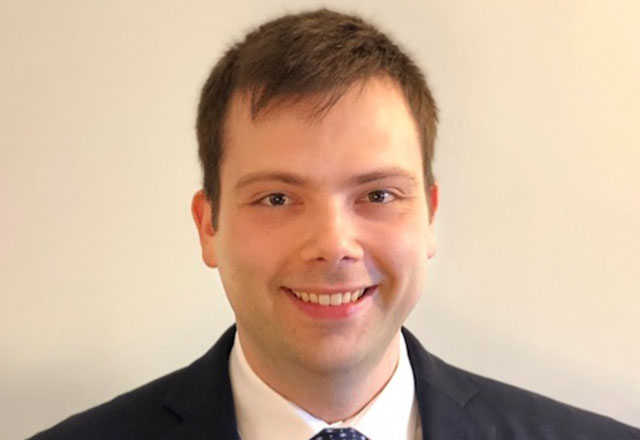
Daniel Ardeljan
Hans J. Prochaska Award
Please describe your research discovery.
I completed my Ph.D. thesis work with Kathleen H. Burns, M.D., Ph.D. My work centers around a basic question: How do cells survive the expression of LINE-1 retrotransposons? We believe this question is important in understanding cancer biology, since it seems that cancers, broadly speaking, tolerate reactivation of these transposons. The curious bit was that “normal” cells have a lot of trouble growing while also expressing these transposons, so that clued us in that there must be some way cancer-like cells handle that toxicity. We think that understanding these mechanisms could reveal something fundamental about the selective pressures imposed on tumors during their evolution, and could inform therapy. At the time we started, few in the LINE-1 field were interested in the translational potential for this biology, and even fewer cancer labs were really excited by transposons. We saw an opportunity to bridge this gap.
Why did you choose Johns Hopkins for your work?
I’m an M.D.-Ph.D. student, but I started as an M.D. student and then applied to the Ph.D. program internally. So, I initially chose Johns Hopkins for the clinical training it offers. When I entered the human genetics Ph.D. program, it was immediately obvious that the people here really care about advancing science in a selfless way. This place houses a lot of highly intelligent, highly motivated and highly collaborative people.
What does receiving this award mean to you personally and professionally? Do you have any connection with the particular award you received?
It’s a great honor to be chosen to receive this award. I am really delighted that it’s the Hans J. Prochaska Research Award, since I really believe that being both a physician and a scientist is an important aspect to how I’m approaching my science.
What contributed to your project's success?
It came down to mentorship, collaboration and perseverance. Kathy was a great mentor who partnered with me to help develop my scientific skills. My thesis committee was also instrumental in helping shape my project and providing key reagents and expertise. I also need to mention the wonderful peer group I’ve had here. The hours spent with friends where all we did was talk about our science has been truly special, and made the years of long days and six- and seven-day weeks fly by.
What thoughts do you have about Young Investigators’ Day itself, as a celebration of the roles students and fellows play in research at Johns Hopkins?
I really appreciate the relationship between the PI and the trainee when it comes to discovery. I think the best relationships are ones in which each brings their own skill set and shapes the science in different ways, which really emphasizes the transition to independence for us trainees. I think that’s what Young Investigators’ Day celebrates.
What has been your best/most memorable experience while at Johns Hopkins?
Scientifically, I remember my thesis committee members’ reactions at the end of our final meeting. There was a shift in the room, and I could tell they were proud. That was a very special moment and was when I recognized that being a great mentor is something I’ll prioritize in my career. Clinically, there are many moments that stand out, but none more memorable than the first time I admitted a patient who asked me directly if they were going to die. Taking care of patients puts it all in perspective for why I do what I do.
What are your plans over the next year or so?
I’ll be a resident in internal medicine here on the Osler Service. Afterward, I’m planning for fellowship with the goal of transitioning to faculty and starting up my own research program.
Tell us something interesting about yourself.
I’m a first-generation Romanian-American. My family emigrated from Yugoslavia (present-day Serbia) and came to the U.S. to escape communism. I grew up bilingual in New York City, which has given me an appreciation for how language and culture are so intimately connected, and how the nuance of how we communicate hints at how we as individuals perceive the world around us.
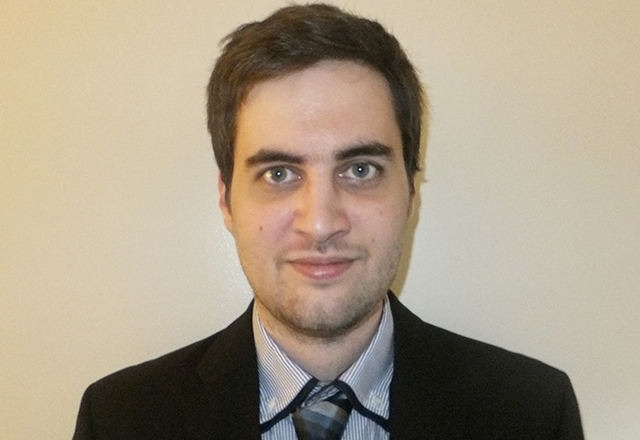
Marios Arvanitis
Physician Scientist Award
Please describe your research discovery.
In the lab of Dr. Alexis Battle, we analyzed genetic data from over 400,000 individuals and discovered a new area of the genome that is associated with the development of clinical heart failure. We then confirmed that finding in an independent cohort of over a million participants.
The novel DNA region had a previously unknown function, so we employed several computational algorithms to combine a series of other genetic data (gene expression, epigenetic regulation and 3D-DNA folding information) and predicted that the novel region affects the expression of a nearby structural gene, known as ACTN2. We then confirmed that prediction with direct genome editing, using CRISPR/Cas9 in differentiated cardiomyocytes. The discovery is important, as it increases our understanding of heart failure pathogenesis and could, in the future, be used to identify people at risk or to develop novel therapies for the disease.
Why did you choose Johns Hopkins for your work?
Hopkins is a world-leading institution for cardiovascular disease and genomics research. The impressive research opportunities and highly collaborative environment make Hopkins a fantastic place for any aspiring physician scientist.
What does receiving this award mean to you personally and professionally? Do you have any connection with the particular award you received?
Receiving the Physician Scientist Award is a great honor. I strive to become an independent investigator in cardiovascular genomics, and this award is an important recognition of my work towards that goal.
What contributed to your project's success?
The incredible mentorship and support by Dr. Battle. The advice and guidance by my co-mentor, Dr. Wendy Post, and the tremendous team of collaborators from JHU and elsewhere — without whom this work would not have been possible.
What thoughts do you have about Young Investigators’ Day itself, as a celebration of the roles students and fellows play in research at Johns Hopkins?
I think it is an important initiative and a celebration of the amazing research performed by trainees in our institution.
What has been your best/most memorable experience while at Johns Hopkins?
Taking care of the sickest patients in our cardiac care unit —working alongside Dr. Steven Schulman, one of the most impressive clinicians I’ve ever had the privilege to meet.
What are your plans over the next year or so?
Starting in July, I will be chief cardiology fellow at Johns Hopkins, starting in July and will subsequently be looking for a faculty position for the following year.
Tell us something interesting about yourself.
I am from Greece, and I love spending vacation time there once a year with my wife and family.
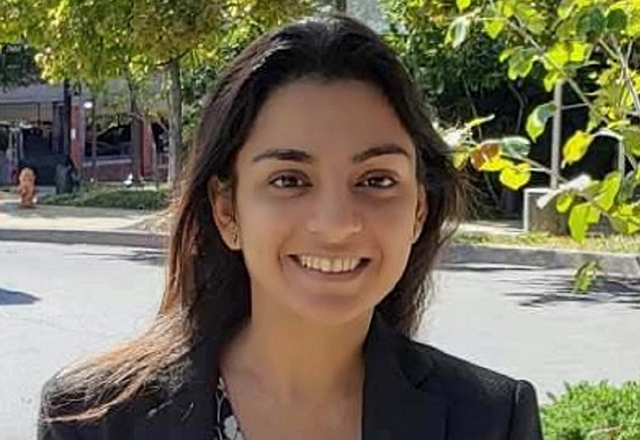
Sneha Berry
Nupur Dinesh Thekdi Award
Please describe your research discovery.
I work under the mentorship of Drew Pardoll, M.D., Ph.D.; Janis Taube, M.D., M.Sc.; and Alex Szalay, Ph.D.; at the exciting interface of cancer immunology, pathology and data science. The team’s long-term goal is to create carefully curated, open source atlases of different tumors stained for multiple proteins, thus spatially mapping immune activity within the tumor microenvironment. Similar to The Cancer Genome Atlas and Protein Data Bank, we hope that making large data sets along with specialized data analysis tools publicly available will spur discoveries at an unprecedented level in cancer immunotherapy. My thesis work has formed the foundation of this effort. Specifically, I developed an end-to-end platform with meticulous quality control for creating quantitative, spatially resolved multiplex immunofluorescence data using lessons derived from the field of astronomy. Implementation of this platform led to the identification of two previously under-recognized immunoactive cell subsets that are now important biomarker candidates for defining survival after anti-PD-1 therapy in patients with melanoma.
Why did you choose Johns Hopkins for your work?
I chose to attend Johns Hopkins because it provides access to great mentors and innovative technologies. The work environment is inspiring and fosters transdisciplinary collaboration.
What does receiving this award mean to you personally and professionally? Do you have any connection with the particular award you received?
It feels great to have your research efforts recognized by your school and I am grateful for the honor.
What contributed to your project's success?
A number of people were involved in making this project a success. The knowledge and guidance of experts in several different disciplines was invaluable. I was also lucky to work in a lab where my co-workers were supportive, talented and extremely helpful.
What thoughts do you have about Young Investigators’ Day itself, as a celebration of the roles students and fellows play in research at Johns Hopkins?
Young Investigators’ Day provides a wonderful opportunity for students to proudly present their research and at the same time learn about outstanding work being performed at other labs across Johns Hopkins.
What has been your best/most memorable experience while at Johns Hopkins?
I would say I have had many memorable experiences, including graduating from my master’s program, the coating ceremony for graduate students, and multiple dinners with fellow graduate students and lab members.
What are your plans over the next year or so?
I am looking forward to my graduation this May and am planning to transition to a career in industry.
Tell us something interesting about yourself.
I have not lived in the same country for more than eight consecutive years. I was born in India, spent much of my adolescence in London, moved back to India again for my bachelor’s degree and then found myself here. I enjoy painting, cooking and trying out new restaurants.
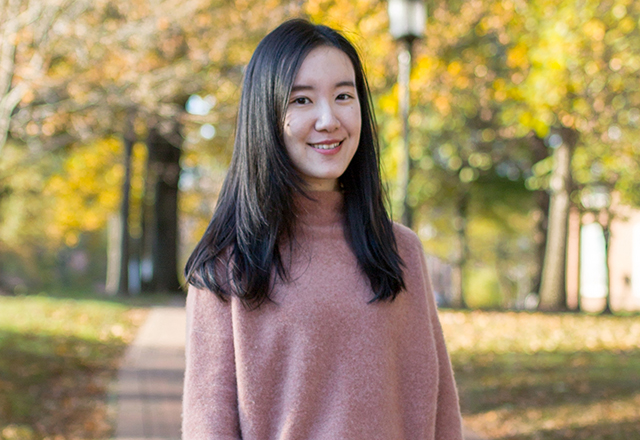
Lujing Chen
Alicia Showalter Reynolds Award
Please describe your research discovery.
In King-Wai Yau’s lab, I study the phototransduction mechanisms of intrinsically photosensitive retinal ganglion cells (ipRGCs). Photoreceptors generally have a specialized photosensitive compartment derived from a modified cilium or microvilli, and are classified as being either rhabdomeric (microvillous) or ciliary. The corresponding phototransduction mechanism, although often varied in details, follows the morphology and is either PLC- or cyclic-nucleotide-mediated. Unlike most photoreceptors, ipRGCs show no signs of a microvillous (rhabdomeric) or ciliary photosensitive compartment. Previous work from our lab showed a PLC-mediated pathway in M1-ipRGCs. The question remains whether other ipRGC subtypes have the same phototransduction mechanism. My colleague and I revealed a new phototransduction pathway in M2- and M4-ipRGCs mediated by cyclic nucleotide and HCN channels. The coexistence of both PLC- and cyclic-nucleotide-mediated pathways in a given M2-ipRGC breaks a dogma about the general segregation of the two phototransduction motifs in different cells, although a copresence has been postulated previously by some developmental biologists to exist at the beginning of photoreceptor evolution. More interestingly, the specific second messenger is cAMP, instead of being cGMP as found for nearly all ciliary phototransduction mechanisms across the animal kingdom except jellyfish (an evolutionarily ancient species). These findings suggest ipRGCs are an extant ancestral photoreceptor.
Why did you choose Johns Hopkins for your work?
I have been fascinated by neuroscience since I was a sophomore. With one of the best neuroscience programs in the world, Johns Hopkins became my dream school. After visiting Johns Hopkins during my interview, I was also impressed by the collaborative and friendly environment here besides the cutting-edge science. Since then, I believed it would be a great place for my Ph.D. training.
What does receiving this award mean to you personally and professionally? Do you have any connection with the particular award you received?
It is my great honor to be chosen for the Alicia Showalter Reynolds Award. This is a milestone in my research career as my Ph.D. thesis work gets recognized. One of my advisor’s previous students (Chih-Ying Su) got the same award in 2006. She is now an assistant professor at UCSD. I will look up to her as my role model and continue my journey in science.
What contributed to your project's success?
I am very grateful to have King-Wai Yau, Ph.D., as my Ph.D. advisor. Yau’s comprehensive training and patient guidance are indispensable for my project’s success. In the Yau lab, I am honored to work with a small group of intelligent and skilled people. We share ideas, comment on each other’s projects and support each other. I also would like to thank my family and friends, who always believe in me unconditionally.
What thoughts do you have about Young Investigators’ Day itself, as a celebration of the roles students and fellows play in research at Johns Hopkins?
It is a great opportunity to see many fantastic works from fellow students and fellows. I am looking forward to sharing my science with other people and receiving feedback on my own project.
What has been your best/most memorable experience while at Johns Hopkins?
In my thesis project, one important experiment is to directly prove the production of cyclic nucleotides in the intrinsic phototransduction pathway of M4-ipRGCs using heterologous CNG channels via AAV. Starting from learning how to do cloning, I eventually did patch-clamp recording on the viral infected ipRGCs and saw the fast CNG currents on top of their slow intrinsic light response after more than a year of trial and error. The moment I saw the CNG current is no doubt the most memorable experience during my Ph.D. training at Johns Hopkins.
What are your plans over the next year or so?
I am graduating and looking for postdoctoral positions to continue my research career.
Tell us something interesting about yourself.
I love painting and photography. I hope one day I can do something to combine science and art.
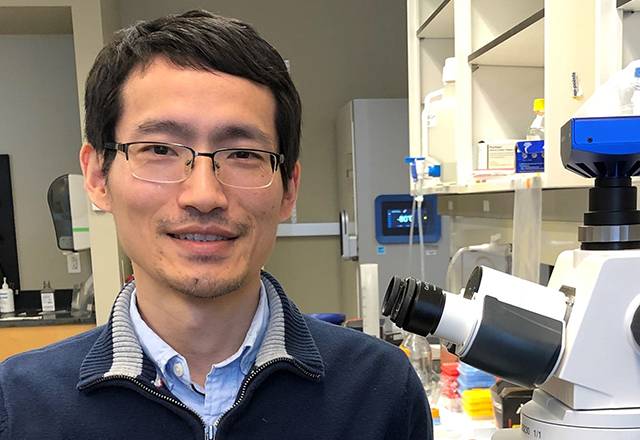
Mengfei Chen
A. McGehee Harvey Award
Please describe your research discovery.
In our nose, the sense of smell is mediated by the olfactory mucosa, a neuroepithelial tissue containing long-lived olfactory stem cells. Even though these stem cells possess a remarkable capacity for regeneration, the loss of the sense of smell is a common symptom in the setting of chronic inflammatory rhinosinusitis. Deepening our understanding of the stem cell behavior has the potential to inform novel treatment strategies for inflammation-related olfactory deficits.
In Andrew Lane’s Lab, my research focuses on the cross-talk between olfactory stem cells and the local immune system in acute or chronic inflammation. We observed that the basal stem cell population was activated in the inflammatory environment and directly contributed to the disease pathology. Our study establishes a mechanism of chronic rhinosinusitis-associated olfactory loss, caused by a functional switch of neuroepithelial stem cells from regeneration to immune defense. The immune activity of basal stem cells in communicating with infiltrating inflammatory cells may play a more generalized role in mucosal immunity at epithelial barrier surfaces in health and disease.
Why did you choose Johns Hopkins for your work?
As a researcher, I have read a tremendous number of papers with significant discoveries in the field of biomedical research performed at Johns Hopkins. I have come to appreciate that Johns Hopkins has the best scientists and clinicians across many disciplines in biology and medicine, especially in my field of interest, olfactory stem cells and human nasal diseases.
What does receiving this award mean to you personally and professionally? Do you have any connection with the particular award you received?
The award recognized the scientific achievements and dedication of not only myself, but also my co-workers and mentor. It has also motivated me strongly to continue to pursue the next significant research finding. Dr. A. McGehee Harvey was renowned for the application of research to medical care. The award in his name particularly fit our work, as our efforts in Dr. Lane’s lab are trying to bring the findings from the lab to the clinic.
What contributed to your project's success?
My project’s focus is with translational research from a mouse model to human disease. Our team has an outstanding clinician, my mentor, Dr. Lane, who generated the transgenic mouse model. I was also fortunate enough to have one of the most renowned pioneers and influential figures in olfactory research, Randall Reed, Ph.D., to give me expert advice on my olfactory stem cell journey. Under their guidance I am able to think deeply and critically about important questions in the field and to design and execute experiments to address them fully. Our lab members, including Heather Kulaga and Amy Smith, have always provided support for my projects. In addition, the Center for Sensory Biology has been a source of technical and research support, lending a wealth of knowledge and expertise.
What thoughts do you have about Young Investigators’ Day itself, as a celebration of the roles students and fellows play in research at Johns Hopkins?
The Young Investigators’ Day is one example of the truly excellent academic environment at Johns Hopkins that nurtures the early careers of students and fellows. The event recognizes and celebrates the important role that students and fellows play in the advancement of scientific research at Johns Hopkins, and will encourage other young individuals to achieve great things in pursuit of their goals and interests.
What has been your best/most memorable experience while at Johns Hopkins?
At Johns Hopkins, I’m able to learn cutting-edge science and skills from the most talented researchers and clinicians in the world. I have many “most” memorable experiences, ranging from the moment that I saw my mentor, Dr. Lane, carrying samples from the operating room to the lab; or times that I ran into distinguished professors in the animal facility; or when I have discussed original exciting images with Dr. Lane and Dr. Reed. While not necessarily uncommon, these memorable moments inspire me to pursue new findings every day.
What are your plans over the next year or so?
I was promoted to a faculty position in our department recently and am working toward independent funding.
Tell us something interesting about yourself.
Besides the research in the lab, I enjoy time with my two little lovely children and the rest of my family. I have learned a lot of children’s songs, which I can sing with them on trips.
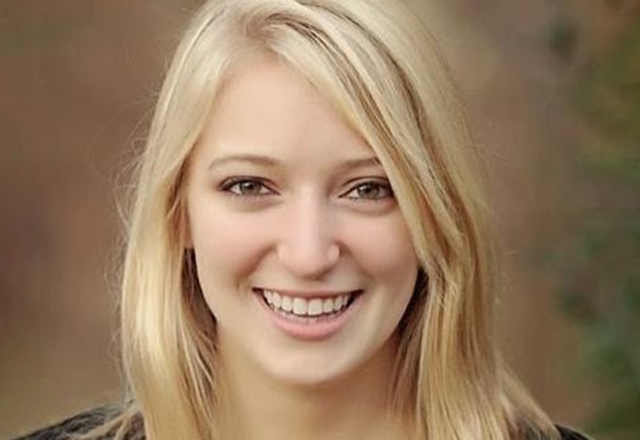
Helen Clark
Martin and Carol Macht Award
Please describe your research discovery.
I conducted this research in the laboratory of Dr. Sergi Regot. In the Regot Lab, we use biosensors and live-cell imaging to study a wide range of complex biological processes, from embryo development to immune signaling. My recent work seeks to understand innate immunity in the context of the epithelial monolayer, the outermost layer of cells that is often in close proximity to microbes. Epithelial tissues must quantify these microbes in order to maintain a balanced immune state.
To understand how this quantification is achieved, we designed a screen of microbe-related signals and measured the nuclear translocation and transcriptional activation of the master immune regulator —NF-κB — in thousands of single cells. We found that as a population, epithelial cells respond to bacterial molecules by activating fractions of cells in an all-or-nothing (i.e., digital) manner. An epigenetic switch that regulates receptor expression maintains the responding cell fraction. The fraction of responding cells can be increased by prolonged innate immune signaling via cytokines that trigger oscillatory NF-κB activity. Epigenetic variegation of receptor expression in single cells allows for long-term, quantitative flexibility in the upper limit of response in the population. This flexible variability at the single-cell level could contribute to the development of diseases that involve chronic inflammatory states tissues.
Why did you choose Johns Hopkins for your work?
I chose Hopkins because of the intellectual support system. My projects took many unexpected detours into niche research topics. Hopkins is truly a place where one can walk down the hall and chat with experts who are world leaders in their field. I also chose Hopkins because the BCMB graduate program has a long history of producing excellent scientists, and, during my interview visit, I fell in love with Baltimore.
What does receiving this award mean to you personally and professionally? Do you have any connection with the particular award you received?
I feel honored, humbled and grateful to the many people who support my research.
What contributed to your project's success?
Without a doubt, the excellent and tireless mentorship from my adviser Sergi. In five years of working with him, he has yet to decline a request to chat. I would also like to thank my lab mates and graduate school friends, who inspire me to work hard both at the bench and in the Baltimore community.
What thoughts do you have about Young Investigators’ Day itself, as a celebration of the roles students and fellows play in research at Johns Hopkins?
I think it is wonderful to dedicate a day to celebrate the research of students and fellows at Hopkins. In graduate school, my research path sometimes feels more like a labyrinth, and it takes unrelenting intrinsic motivation to continue eliminating dead ends. In these times, extrinsic motivation in the form of an award is extremely helpful.
What has been your best/most memorable experience while at Johns Hopkins?
It is difficult to pick one moment. There were several times when a discussion with my adviser began with, “So, I had this idea that might be crazy …” The fail rate of those experiments was probably around 98%, but when they worked, it was a high of indescribable bliss. There was one I remember fondly — where we tried to engineer a light-based, intercellular signaling system, using optogenetic tools. Of course, this idea ended up in the fail category, but it was fun to try.
What are your plans over the next year or so?
I plan to graduate in the fall, and I am actively searching for a biotech industry job — preferably in the Bay area.
Tell us something interesting about yourself.
I am very fortunate to have an eccentric family that invested heavily in my science education, from an early age. My sisters and I grew up observing the development of frogs, butterflies — even bobwhite quail — in our own kitchen. Now, we are all pursuing science careers: One is on the faculty job market in astrophysics and the other is working towards a neuroscience Ph.D. It is rare to have lifelong access to such an unconditional support system.
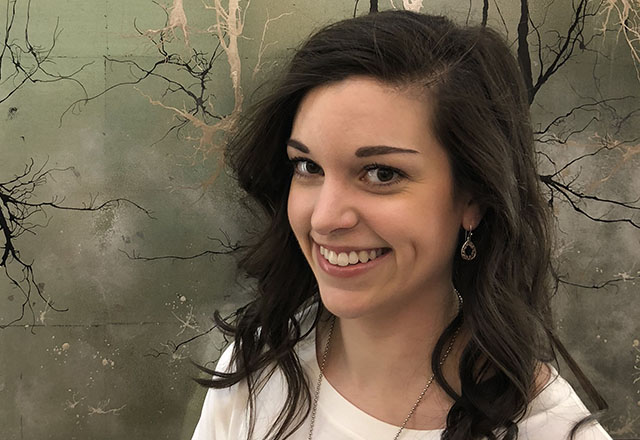
Alyssa Coyne
Daniel Nathans Award
Please describe your research discovery.
As a postdoctoral fellow in the lab of Jeffrey Rothstein, I am studying how alterations in the composition and function of the nuclear pore complex (NPC) contribute to neurodegenerative disease pathogenesis, specifically in Amyotrophic Lateral Sclerosis (ALS) and Frontotemporal Dementia (FTD). The NPC critically governs multiple cellular processes including gene expression and the transport of macromolecules between the nucleus and cytoplasm. It is a large, highly organized protein complex consisting of multiple copies of ~30 different nucleoporin proteins. Although the majority of these nucleoporin molecules exist within this complex, a subset have additional roles within the nucleus or cytoplasm as individual proteins. While many studies in the field using artificial overexpression disease model systems have reported cytoplasmic accumulations of a small subset of these nucleoporins, there exists a critical need to evaluate whether or not these proteins are altered within the NPC structure itself. Using super resolution microcopy and human induced pluripotent stem cell-derived neurons, my work has now addressed this gap in knowledge in human neurons from patients with the most common genetic form of ALS. Moreover, I have identified the nucleoporin POM121 as the critical initiator of a pathological cascade impacting NPC composition, function and downstream neuronal survival. Collectively, my work advances our knowledge of human neuronal NPC biology in health and disease and identifies compositional changes to the NPC as an early event in ALS pathogenesis.
Why did you choose Johns Hopkins for your work?
The groundbreaking basic and translational research and collaborative environment at The Johns Hopkins University made it an easy choice for my postdoctoral training. In addition, Jeffrey Rothstein is a world-renowned ALS researcher and clinician. Being a member of his lab and the broader Johns Hopkins community has afforded me every opportunity to excel in my path toward becoming an independent research scientist.
What does receiving this award mean to you personally and professionally? Do you have any connection with the particular award you received?
It is a great honor to be the recipient of The Daniel Nathans Research Award. It is extremely motivating to be recognized for this award and be a part of the community of its past recipients.
What contributed to your project's success?
My mentor, Jeffrey Rothstein, has been the key to my success and inspiration throughout my postdoctoral training thus far. He has fostered my independence scientifically and professionally while always being available to discuss new findings. His excitement over new data is truly motivating. Moreover, the opportunities he has provided me for scientific collaborations have continued to foster my excitement and curiosity.
What thoughts do you have about Young Investigators’ Day itself, as a celebration of the roles students and fellows play in research at Johns Hopkins?
I am excited to learn about the work of the other awardees as these awards highlight our collective research contributions. It is a great opportunity to bring together young scientists from multiple fields at Johns Hopkins to build networks.
What has been your best/most memorable experience while at Johns Hopkins?
My most memorable moment thus far has been the opportunity to freely explore my scientific curiosity and present my work at multiple scientific conferences via oral and poster presentations. Due in large part to the mentorship of Jeffrey Rothstein, I was awarded the ALS Association’s Milton Safenowitz Postdoctoral Fellowship for two years of my training. Together, these opportunities have led to a significant advancement of the biology underlying ALS pathogenesis, and I hope my research may one day translate into new therapeutic strategies.
What are your plans over the next year or so?
Within the next few years, I plan to continue my current research investigating the role of the NPC in neurodegenerative disease pathogenesis before applying for independent faculty positions.
Tell us something interesting about yourself.
I grew up in Maine and went to college at Springfield College in Massachusetts. I then went on to do my doctoral training at the University of Arizona, where I used a fly model to study the molecular mechanisms underlying ALS. In my free time, I enjoy hiking, traveling, and spending time with family and friends.
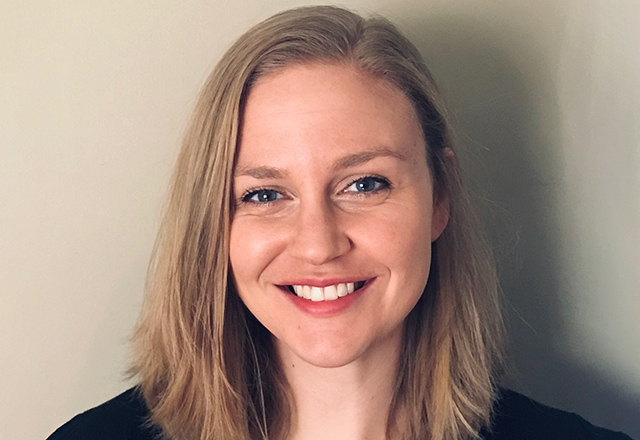
Karole D'Orazio
Paul Talalay Award
Please describe your research discovery.
I began studying how cells control the quality of the messenger RNA they produce in the laboratory of Dr. Rachel Green. We set out to find novel factors associated with the decay of translationally problematic mRNAs and performed genetic screens in collaboration with Dr. Grant Brown’s lab at the University of Toronto. We identified a key new protein that enzymatically cleaves problematic mRNAs at stalled ribosomes. This finding expands our knowledge of how cells respond to errors in transcription and RNA damage.
Why did you choose Johns Hopkins for your work?
I chose Johns Hopkins to earn my Ph.D. because of the collaborative environment the institution promotes. Professors have an open door policy and without such, I would have not been able to brainstorm and come up with the experiments that led to the main discovery of my Ph.D.
What does receiving this award mean to you personally and professionally? Do you have any connection with the particular award you received?
Receiving this recognition is a great honor personally and professionally. Personally, I remember attending Young Investigators’ Day in my early years at Johns Hopkins and being inspired by my colleagues’ outstanding achievements. Now, being a part of that group is an incredible feeling. Professionally, to be recognized in memory of Dr. Paul Talalay, who was not only an extremely successful researcher but also he truly valued young scientists, and training is inspiring. I hope to be the type of scientist and mentor Dr. Talalay was at Johns Hopkins.
What contributed to your project's success?
The major contributor to my project’s success was learning from others. My PI, Rachel Green, pushed me to attend conferences, take courses and collaborate with people outside of our field. Then I brought what I learned back to our lab, and this really expanded the limit on what we could achieve.
What thoughts do you have about Young Investigators’ Day itself, as a celebration of the roles students and fellows play in research at Johns Hopkins?
I am honored to be a part of this wonderful day. It was inspirational to me as a young scientist to see what my colleagues could accomplish, and I hope this day continues throughout years to come.
What has been your best/most memorable experience while at Johns Hopkins?
My most memorable experience at Johns Hopkins is not exactly one experience, but the people that I have met along the way and the experiences I have had with all of them. In particular, the students in my cohort are talented, kindhearted, wonderful people that have helped me get where I am now, and I know they will continue to help me in my future career and life.
What are your plans over the next year or so?
Over the next six months or so, I will be joining Dr. Danesh Moazed’s lab in the cell biology department at Harvard Medical School as a postdoctoral fellow. I am excited to continue my research on the central dogma and very happy to be joining such a great lab.
Tell us something interesting about yourself.
One of my favorite hobbies is playing intramural sports. Specifically, I play an Irish field sport called camogie. The Irish claim it is the original field sport, although I have not fact checked that claim. Camogie is an extremely fun, intense sport that helps me take my mind off failed experiments for a little while.
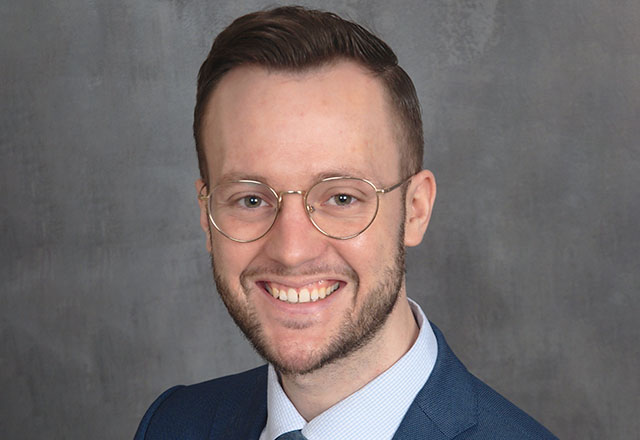
Dustin Gable
David I. Macht Award
Please describe your research discovery.
I worked in the lab of Mary Armanios, M.D., where we discovered a new genetic cause of familial pulmonary fibrosis due to a mutation in the nuclear RNA exosome targeting component ZCCHC8. Our lab efforts are focused on elucidating the genetic underpinnings and mechanisms of lung disease, cancer and telomere syndromes. Specifically, my dissertation focused on identifying new genetic causes of pulmonary fibrosis, which affects upward of 100,000 people, with over 30,000 deaths in the U.S. annually. For this work, we initially found that affected individuals in a family with autosomal dominant pulmonary fibrosis had both short telomeres and low levels of the telomerase RNA component. Using cells from these patients, and a CRISPR knockout mouse model, we found that ZCCHC8 is required for telomerase function and telomere length maintenance. In contrast to the ZCCHC8 partial loss found in patients with pulmonary fibrosis, we also found that complete loss of ZCCHC8 causes pervasive RNA dysregulation with misprocessing of other low-abundance RNAs including cilia components. In vivo, this biallelic loss manifests as neurodevelopmental disease. Our discovery identifies novel regulators of telomerase function that are mutated in disease and underscores the important role telomerase dysfunction plays in pulmonary fibrosis susceptibility. It also provides a model for studying the role of RNA misprocessing in the susceptibility to neurodevelopmental disease.
Why did you choose Johns Hopkins for your work?
The people. I remember walking away from my M.D., Ph.D. interview with a deep sense of the camaraderie among the students and faculty. People came here to engage in rigorous work and to be part of a team. Now, as I complete this part of my journey, I can honestly say that the experience exceeded my expectations. I was fortunate to have had the opportunity throughout my time at Johns Hopkins to learn from and train with diverse and collaborative mentors and peers in the hospital, across research labs, and within the Baltimore City community itself. The people work hand in hand with respect for one another, and I hope to take that with me along my professional journey.
What does receiving this award mean to you personally and professionally? Do you have any connection with the particular award you received?
This award is a reflection of teamwork and dedication from many individuals both in and outside of Johns Hopkins. Most importantly, it gives a scientific voice to the family who participated in this work. We hope that these families and others struggling with diseases like theirs throughout the country and world may find answers if we continue to strive for innovative answers to critical clinical and laboratory questions that will advance our understanding of disease. As a pharmacist and researcher, Dr. David Macht asked critical scientific questions at the bench to address problems in human health, including lung disease, that we continue to confront today as exemplified by his attempts to discover antispasmodics in asthma by studying pig bronchi. I hope to model my physician scientist career in a similar fashion by advancing our understanding of pediatric neurologic disease both in the clinic and at the bench using innovative models as well.
What contributed to your project's success?
Guidance from my mentor, Mary Armanios, and support from my family and friends have been indispensable to the success of my work. Mary engrained in me the perspective that a balanced life outside of training and work is key to success at the bench. At the end of the day, a project is a project, but family and friends are there through thick and thin and help you reset, motivate and be happy, all of which create a foundation for success when tackling the project efficiently and with focus. I also have to mention that this project would not have been successful without the incredible scientists working across the numerous Johns Hopkins core facilities who work hard and invest time and thought into the project as well. Finally, I cannot think of a time when any faculty or student across departments did not make themself available to help navigate challenging problems that arose along the way.
What thoughts do you have about Young Investigators’ Day itself, as a celebration of the roles students and fellows play in research at Johns Hopkins?
The Young Investigators’ Day brings people together from across the university to share new ideas and discoveries that often take months and years to cultivate. Having the opportunity to engage with each other scientifically beyond our own scientific bubble both jump-starts new directions as well as motivates each other to keep moving forward. Students and fellows are the future leaders in research who will represent Johns Hopkins for years to come, so an opportunity to celebrate our work together is a way to begin collaborations with and provide support for each other as we rise in our careers.
What has been your best/most memorable experience while at Johns Hopkins?
My thesis seminar day is easily my most memorable experience at Johns Hopkins. I was so proud of the work we do in the Armanios Lab and I was able to share some of it with so many people from various walks of life in the same room all to celebrate science. My grandma, aunt, uncle, cousins, parents, siblings, nieces and nephew, who all traveled from our small farm town in Ohio, along with my high school, undergrad, medical and graduate school friends, and finally my mentors from Ohio State and Johns Hopkins all gathered to learn about the telomere, RNA, and lung and neurologic disease and then eat and drink champagne in the same room!
What are your plans over the next year or so?
I will be completing a pediatric neurology residency at Boston Children’s Hospital and plan to care for and study the genetics and treatment of children with neurologic disease as a physician-scientist.
Tell us something interesting about yourself.
I am the second oldest of six kids who grew up on my family’s dairy farm in rural Ohio. I still get to go back on occasion and farm with my dad and brothers! My parents didn’t have the opportunity to go to college, so it makes my journey in medicine and science even more exciting as they are right there with me each step of the way seeing all of this for the first time as well.
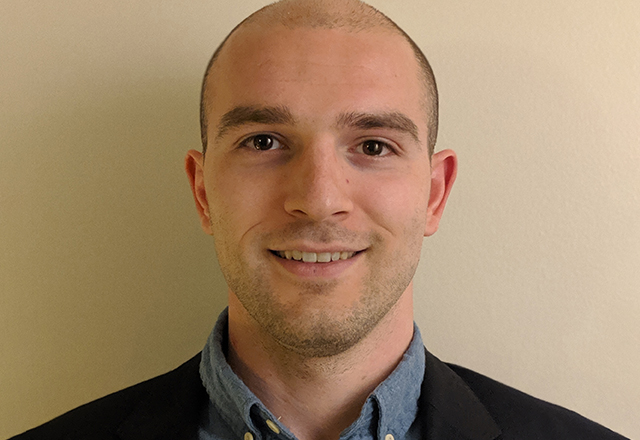
Fadi Jacob
Paul Ehrlich Award
Please describe your research discovery.
As an M.D./Ph.D. student in Hongjun Song’s Lab, I had the opportunity to collaborate with neurosurgeons and pathologists to develop a three-dimensional organoid model for glioblastoma directly from surgically resected tumor tissue. By avoiding cell dissociation and clonal selection, glioblastoma organoids better recapitulate the cellular, transcriptional and mutational diversity of patients’ tumors, providing a valuable tool to test targeted therapeutics. My hope is that this model system will be utilized to test chemotherapeutic drugs and immunotherapies targeted to each patient’s unique tumor before initiating treatment, to maximize the probability of survival for those affected by this devastating disease.
Why did you choose Johns Hopkins for your work?
I chose Johns Hopkins for my M.D./Ph.D. training because of its reputation as an exceptional hospital and research institute. with excellent clinical training and research labs headed by many of the world’s leading scientists.
What does receiving this award mean to you personally and professionally? Do you have any connection with the particular award you received?
Receiving the Paul Ehrlich Award is an honor, and I am humbled to receive this award amongst all the talented young researchers at Johns Hopkins. Dr. Ehrlich popularized the concept of the “magic bullet,” an analogy for using targeted therapies to treat specific microbial infections without harmful side effects. This award is especially meaningful to me, as I hope to use the model system I developed to find the “magic bullet(s)” to treat each patient’s tumor. This award has motivated me to continue a career in science in pursuit of more effective treatments for devastating diseases.
What contributed to your project's success?
Many factors contributed to my project’s success, including excellent clinical collaborators and colleagues in the Song Lab; guidance from mentors; and a passion for developing better preclinical models for human diseases. My experience with human stem cell and brain organoid cultures provided many of the skills and insight necessary to develop a more clinically relevant model system for glioblastoma.
What thoughts do you have about Young Investigators’ Day itself, as a celebration of the roles students and fellows play in research at Johns Hopkins?
Basic science research is difficult and requires a large investment of time. Young Investigators’ Day serves an important role in recognizing the often-overlooked achievements of graduate students and postdoctoral fellows. I am extremely humbled to receive this award amongst all the fantastic trainees at Hopkins and will use this recognition as motivation to continue pursuing a career in medical science to gain a better understanding of human diseases and to improve patient outcomes.
What has been your best/most memorable experience while at Johns Hopkins?
My most memorable experience while at Johns Hopkins would definitely be the “College Olympics,” during my first and second years in medical school. The competitive games gave us a much-needed break from academics and allowed us to interact as classmates towards a common goal.
What are your plans over the next year or so?
My goal is a career that combines basic science with clinical experience to better understand and develop therapeutics for conditions that currently have no effective treatments. I plan to return to medical school in August to finish my degree requirements and then pursue residency and fellowship training.
Tell us something interesting about yourself.
I am proud to be the first in my family to graduate from college and pursue a career in science and medicine. I enjoy spending time with friends and family, trying new foods, playing sports and indulging in the latest computer games.

Kanghoon Jung
W. Barry Wood Jr. Award
Please describe your research discovery.
Navigation is an essential behavior for the survival of a wide range of animal species. The brain must execute fast and efficient ‘where-to-go’ decisions towards a goal to achieve desired outcomes. My research, conducted in Hyung-Bae Kwon’s lab, has shown the cellular and circuit underpinnings of cognition underlying “where-to-go” decision. Particularly, we focused on neural representations of a spatial goal, thought to guide map-based navigation towards the goal. To examine a goal system in the brain, we targeted the nucleus accumbens (NAc), a locus of receiving inputs about spatial-information, reward, and of interfacing outputs for action control. We identified a ‘functionally-defined’ NAc neuronal population that encodes a goal location in the context of valued environment through the medium of dopamine and that truly guides navigation towards the goal by directly manipulating them. Finding goal-directing neurons in the NAc extends the concept of the cognitive map beyond hippocampal-entorhinal circuits and offers advances in understanding fundamental operating mechanisms of flexible action control to pursue diverse behavioral goals stored in cognitive maps.
Why did you choose Johns Hopkins for your work?
I decided to join Kwon Lab's move from Max Planck Florida Insititute to Johns Hopkins. because Dr. Hyungbae Kwon's an amazing and inspiring mentor who provided me to access the top of the line technology and expertise for the curiosity-driven research. I also believe that Johns Hopkins is the arena where exceptional scientists from around the world come to make groundbreaking discoveries. I am delighted to be a part of this supportive scientific community.
What does receiving this award mean to you personally and professionally? Do you have any connection with the particular award you received?
I feel truly honored to be a recipient of the W. Barry Wood, Jr. Award. This award serves to acknowledge the outstanding legacy that Dr. Wood built throughout his career at the Johns Hopkins. I am inspired by his leadership and pioneering spirit. I found in his biography that Carl Moore, his colleague, pointed out, "Barry Wood budgeted his time so well that he found time to work, to spend with his family, to keep physically trim, and to be outstanding in medical academia". I look forward to following his exemplary steps in my path as neuroscientist.
What contributed to your project's success?
would like to mention what contributed to my project’s success the most is the guidance from my inspiring and devoted mentor, Dr. Kwon. He has provided me with supports and advice to keep pursuing my research goal with persistence. In addition, I am very fortunate to work with my motivated and supportive colleagues in the lab. We have made daily progress and encouraged each other to overcome trial-and-errors together. Working with them led me to adventurously challenge important questions in the field.
What thoughts do you have about Young Investigators’ Day itself, as a celebration of the roles students and fellows play in research at Johns Hopkins?
I think it is an important day to recognize not only the outstanding achievements of young scientists but also the contributions we've made collectively to the scientific community at Johns Hopkins. It is the day to inspire young scientists that our hard work, collaboration, and creativity have not been forgotten.
What are your plans over the next year or so?
I will be finishing up several projects for publications and will start looking for an investigator position where I can push the boundaries to answer my curiosity-driven neuroscience questions and contribute to the neuroscience community.
Tell us something interesting about yourself.
I studied physics in my undergraduate years. After graduating, I served the local community as a firefighter for two years. During that time, I encountered various urgent and life-threatening situations where rapid decision-making was critical. It enlightened me to be curious about how people think and make intuitive decisions in emergency situations. It was a turning point for me to explore the field of neuroscience and ever since then I have been studying neurons, circuits, and behavior.
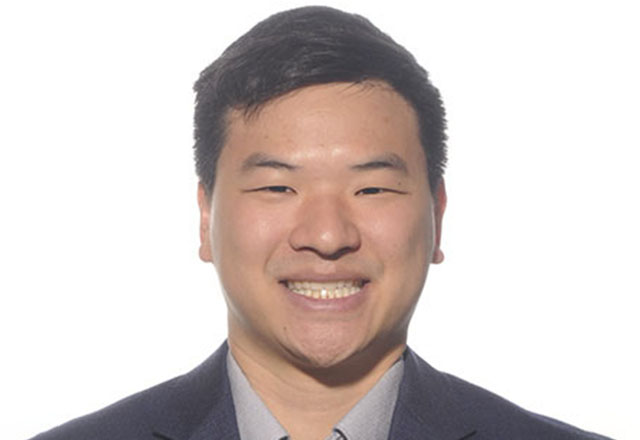
James Meixiong
Michael A. Shanoff Award
Please describe your research discovery.
I performed my thesis research in the laboratory of Xinzhong Dong, Ph.D. With Xinzhong’s guidance, I discovered that bile activates sensory neurons through a receptor called MRGPRX4. This is important because patients who have difficulty excreting bile, such as those with liver damage, experience a profound, whole body itch which is currently untreatable. Our discovery provides better understanding of why this itch occurs and, importantly, identifies a promising therapeutic target to benefit this long-suffering patient population.
Why did you choose Johns Hopkins for your work?
I chose Johns Hopkins for my graduate education for the opportunity to work with some of the brightest, most driven students in the world. Interaction with my peers, whether it be hearing their criticisms or leaning on their advice, was not only enjoyable but also important for my personal development. In addition, I chose Johns Hopkins because I’d heard that it harbored an outstandingly collaborative community. In my experience, this was proven to be the case. The project that I undertook required knowledge of multiple fields ranging from clinical hepatology to pharmacology. Because of this, I was forced to rely on the expertise of multiple professors besides my primary mentor. Johns Hopkins is a place where world experts in their field stalk every hallway so it was not hard to find people with the perfect fund of knowledge. However, what I did not expect was just how approachable each and every faculty member would be and how generous they would be with their time despite having busy schedules.
What does receiving this award mean to you personally and professionally? Do you have any connection with the particular award you received?
I feel incredibly lucky to be able to receive this award and am very grateful to the committee members, organizers, and endowers of these awards. While I never set out to do research for awards, it is humbling to be recognized for one’s work and to be in such esteemed company.
What contributed to your project's success?
People are what drove this project’s success. From those behind the scenes, like support staff and core facility scientists, to those directly involved such as Xinzhong; my thesis committee members Sol Snyder, Alex Kolodkin and Michael Caterina; and my co-authors, Chirag Vasavda principal among them. Without all of their contributions, this project would not have been possible, and without friends and family to keep one sane throughout the process, the whole enterprise would have fallen apart.
What thoughts do you have about Young Investigators’ Day itself, as a celebration of the roles students and fellows play in research at Johns Hopkins?
I am glad for the Young Investigators’ Day and what it represents. Students and fellows are on the frontlines of scientific enterprise, a varied experience where no two days are alike, but where Eureka moments are undoubtedly rare and most days are tedious failure. For the opportunity to contribute to science, it’s already worth it. Still, it’s nice to be celebrated.
What has been your best/most memorable experience while at Johns Hopkins?
My best experience while at Johns Hopkins is not professional but personal. I was lucky enough to meet my wife, Janelle Ho, while we were in medical school together. I could not imagine things turning out any other way.
What are your plans over the next year or so?
I am currently enrolled in the Johns Hopkins MSTP program, with a graduation date set for 2021. Afterward, I plan on furthering my clinical training and hopefully will one day run a successful research group focused on translating bench findings to bedside treatments.
Tell us something interesting about yourself.
I have many hobbies. I was a decent swimmer in high school, good enough to be on an All-American relay but not great enough to swim in college. I enjoy playing poker but mostly break even. I am struggling to write more, including fiction and works completely unrelated to science or medicine.
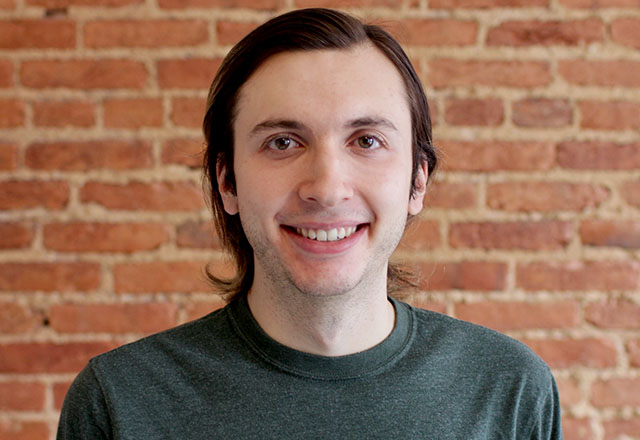
David Ottenheimer
Michael A. Shanoff Award
Please describe your research discovery.
In the lab of Patricia Janak, Ph.D., I studied how neurons in the ventral pallidum, a brain region considered part of the basal ganglia, respond when rats receive highly palatable food rewards. Historically, the ventral pallidum has been described as a relay station for reward-related information leaving the nucleus accumbens, a more widely studied region known to be important for controlling the seeking and consumption of rewards. In my research, I found that the ventral pallidum has very pronounced responses to rewards that reflect the rats’ relative preference for each available reward. These responses were stronger than in nucleus accumbens and also preceded the similar activity there. This finding contributes to building evidence that the ventral pallidum is important for processing rewards above and beyond its role as an output of the nucleus accumbens. I further found that the neural activity in the ventral pallidum tracks rats’ preferences as they change over time, and this activity guides their choice behavior. These findings should increase interest in studying the ventral pallidum in order to understand how our brain processes information about the rewards we consume and how that information impacts what rewards we choose to consume in the future.
Why did you choose Johns Hopkins for your work?
In addition to a strong neuroscience community broadly, Johns Hopkins has a great group of scientists interested in how the brain processes rewarding stimuli, like food, which is the topic I wanted to study in graduate school. That made applying to the neuroscience Ph.D. program here, an obvious choice for me. When I visited, I immediately noticed the collegiality and mutual respect among the faculty and students in the neuroscience department, and that made Johns Hopkins my top choice.
What does receiving this award mean to you personally and professionally? Do you have any connection with the particular award you received?
Most aspects of a Ph.D. are very insulated. It’s just you, the data, your adviser and a few people around you. Being recognized by the broader community is a huge honor. The previous recipients of The Michael A. Shanoff Award are an inspirational and accomplished group. I am proud to be able to carry on Dr. Shanoff’s legacy in this small way.
What contributed to your project's success?
I had incredible mentorship from my adviser, Dr. Janak, as well as a former postdoc in the lab, Jocelyn Richard. I can credit their training and the expertise of the entire lab for giving me the best possible platform for success. Many of the most exciting experiment and analysis ideas actually came from discussions with the broader neuroscience community at Johns Hopkins, including fellow students in my program and my thesis committee: Marshall Hussain Shuler, Jeremiah Cohen, and Michela Gallagher. A strong culture of work-life balance and independent working in my lab allowed me to develop the creativity and passion to complete my projects.
What thoughts do you have about Young Investigators’ Day itself, as a celebration of the roles students and fellows play in research at Johns Hopkins?
Students and fellows are often the individuals making the scientific discoveries, so it is very important to recognize their contributions and not just attribute the work to faculty, as is common with scientific awards. I appreciate the opportunity that Young Investigators’ Day provides to honor trainees.
What has been your best/most memorable experience while at Johns Hopkins?
All of the amazing times I shared with my fellow students, including happy hours, retreats, journal clubs, and more, will be the memories I most treasure from this time.
What are your plans over the next year or so?
I finished my Ph.D. in March, and I will continue working in my current lab as a postdoc for a short while. I plan to start a postdoctoral position in a new lab this summer.
Tell us something interesting about yourself.
I have a couple of hobbies that I enjoy because they provide complementary experiences to research. First is running. I can enter a sort of meditative state mentally while running that helps me refocus, and I like being able to have measurable progress as I track my runs. Second is music. Playing guitar or piano and singing is an immersive experience that challenges me to be creative in a way that is totally different from science.
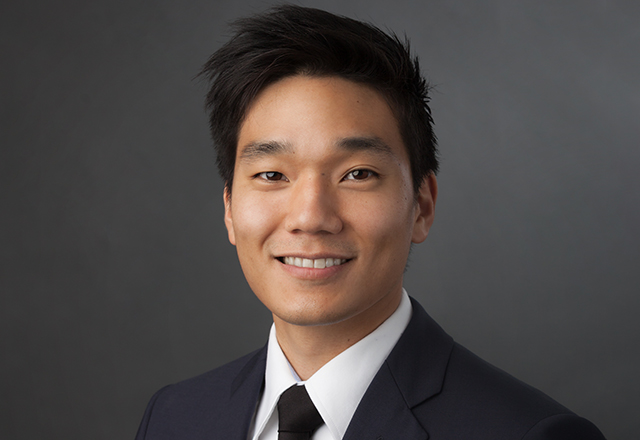
Joseph Shin
David Yue Award
Please describe your research discovery.
Systemic sclerosis (SSc) is a complex disease in which previously healthy young adults show an intractable predisposition for fibrosis of the skin and internal organs. It is among the most devastating rheumatic disease, with a 10-year mortality rate approximating 30%. In the absence of a major defined genetic contribution to disease, the pathogenic mechanism remains unknown. Treatments are largely symptomatic and often ineffective. Under the mentorship of Hal Dietz, M.D., I found that dermal fibroblasts in SSc patients maintained elevated expression of a dominant profibrotic cytokine called TGFB2, through constitutive epigenetic activation of a novel enhancer. This pathologic epigenetic mechanism was found highly dependent on another player called BRD4, the pharmacologic inhibition of which resulted in reversal of dermal fibrosis in SSc skin explants. These findings advance an epigenetic mechanism of fibrosis in SSc and inform a regulatory mechanism of TGFB2.
Why did you choose Johns Hopkins for your work?
I chose Johns Hopkins because of my classmates. I noticed that there are many institutions in the country with amazing scientists and exciting projects. But I found that Johns Hopkins was among the very few institutions that not only provided great training, but also a genuine sense of community and collaboration.
What does receiving this award mean to you personally and professionally? Do you have any connection with the particular award you received?
I'm excited! It's such an honor to be considered among the other young investigators recognized at Johns Hopkins this year.
What contributed to your project's success?
The project's success depended on the collaborative effort of our patients, rheumatologists, clinical technicians and lab members. I think the most critical factor for our success was our mentor's emphasis on hypothesis-driven research. With each experiment, Dr. Dietz taught us to design experiments with consideration of both the scientific and clinical data. As a result, each experiment yielded data that was meaningful for both the scientific community and the patient population.
What thoughts do you have about Young Investigators’ Day itself, as a celebration of the roles students and fellows play in research at Johns Hopkins?
When I first learned of Young Investigators' Day, my first impression was that Johns Hopkins cared about training students and fellows.
What has been your best/most memorable experience while at Johns Hopkins?
It was a discussion with my mentor, Dr. Dietz, over a couple of cold pilsners at the end of a long conference day. I asked him what type of ambition or purpose fueled his passion in research throughout his career. Was it the science? The excitement of clinical trials? The publications and awards? He shook his head no, and said, "It's my patients who keep me up at night. It's their symptoms that makes the lab exciting. But most of all, it's their genuine support and interest in each of my projects that keeps me going." This moment taught me that the mark of a brilliant physician-scientist is not his/her logic, technique or sheer intelligence, but rather his/her passion for those with unmet needs.
What are your plans over the next year or so?
I will be applying for residency next year, with plans to pursue a career in academia.
Tell us something interesting about yourself.
I've unexpectedly found cooking to be a fun stress outlet. This hobby has been particularly helpful with my two-year-old son, whom I've been trying to lure away from French fries with creative vegetable dishes. I think my son enjoys my cooking, but my wife often finds it too experimental. As long as my son eats, I'll call it a win.

Shuohao Sun
Helen B. Taussig Award
Please describe your research discovery.
Sound detected by a single auditory hair cell is relayed by 10-30 type I spiral ganglion neurons (SGNs), the primary sensory neurons of the auditory system, to the central nervous system. Although these neurons exhibit differences in spontaneous firing rates and activation thresholds, it is unclear whether the physiological diversity reflects their endogenous heterogeneities and whether they differentially process auditory information. In Ulrich Mueller’s lab, I demonstrated that type I SGNs consist of three molecularly distinct subtypes (named type IA, type IB and type IC), using single-cell RNA sequencing (scRNAseq). These three subtypes exhibit distinct innervation patterns and spontaneous firing rates. Moreover, these subtypes are specified postnatally in an activity-dependent manner. Deafness mutations that disrupt hair cell mechanotransduction and glutamatergic communications from hair cells to SGNs disrupt this SGN subtype specification. To further characterize the functional differences of SGN subtypes, I have generated CreERT2 mouse lines that specifically target the type IA and IC populations. Based on their physiological properties, the low spontaneous firing neurons with high activation thresholds are predicted to be dispensable for hearing sensitivity, but their large dynamic ranges are expected to play critical roles in hearing in noise. Consistently, silencing the type IC subtype significantly impaired hearing in a noisy environment, but not in quiet. Surprisingly, inhibition of the type IC population also affected frequency discrimination, suggesting previously unappreciated fundamental functional differences among SGN subtypes.
Why did you choose Johns Hopkins for your work?
Johns Hopkins is a top-notch research institution with cutting-edge neuroscience labs and a collegial environment.
What does receiving this award mean to you personally and professionally? Do you have any connection with the particular award you received?
It is a great honor for me to receive the Young Investigators’ Day award again. I received the YID award during graduate study. It really means a lot to me both personally and professionally.
What contributed to your project's success?
Guidance from my mentor, Ulrich Mueller, Ph.D.; help from both inside my lab and outside; and of course, perseverance, as for all research projects.
What thoughts do you have about Young Investigators’ Day itself, as a celebration of the roles students and fellows play in research at Johns Hopkins?
I think it’s a truly wonderful and motivating event for young investigators to see the exciting work of our peers celebrated.
What has been your best/most memorable experience while at Johns Hopkins?
My whole experience at Johns Hopkins has been really enjoyable and memorable.
What are your plans over the next year or so?
I’m looking for a faculty position and hope to start my own lab soon.
Tell us something interesting about yourself.
I met my wife during my graduate study here at Johns Hopkins.
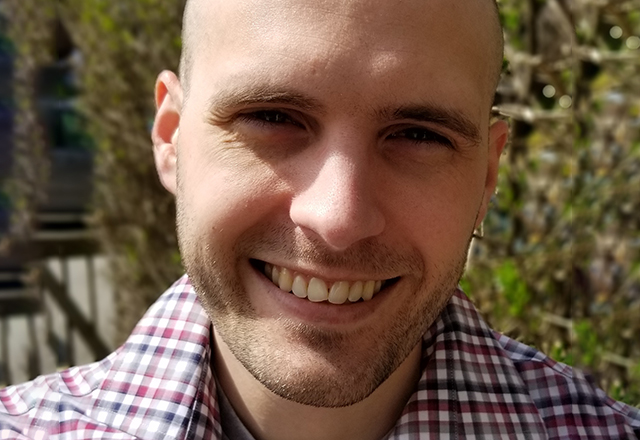
Evan Worden
Paul Ehrlich Award
Please describe your research discovery.
Human DNA is packaged into the protein-DNA complex called chromatin. The minimal organizational unit of chromatin is the nucleosome, which is composed of a core of histone proteins wrapped by DNA. Cells decide which genes are turned on and off, using a complex network of covalent modifications on histone proteins. Inappropriate attachment of histone modifications can cause genes to be turned on when they should be turned off instead, which can lead to a variety of human diseases, such as cancer. For my research, in the lab of Dr. Cynthia Wolberger, I determined the three-dimensional structures of two important enzymes, called Dot1L and COMPASS, bound to nucleosomes. Both Dot1L and COMPASS attach methyl groups to histones, and dysregulation of these enzymes can lead to cancer in humans. My structures revealed how Dot1L and COMPASS interact with the nucleosome to attach methyl groups and how these enzymes are activated by another histone mark, called ubiquitin. My findings answered long-standing questions in the chromatin field about how these enzymes are regulated and opened up new avenues for drug discovery that are currently being pursued in the Wolberger lab.
Why did you choose Johns Hopkins for your work?
I did my graduate research at a University that did not have a medical school, so I chose Johns Hopkins, in part, because I felt that I would have more opportunities to interface with clinical researchers. I had also known about Dr. Wolberger’s research long before coming to Hopkins and wanted to gain experience in her lab during my postdoc.
What does receiving this award mean to you personally and professionally? Do you have any connection with the particular award you received?
Being chosen to receive the Paul Ehrlich Award is a huge honor, and it is humbling to receive an award named for such an early pioneer in the targeted use of chemicals to treat specific diseases. We often take the idea that specific chemicals can be used to treat disease for granted, but since my own research has opened up new avenues for drug discovery, I do feel a connection to Dr. Ehrlich’s work.
What contributed to your project's success?
My project would not have been possible without technical advances in cryo-electron microscopy (cryo-EM), which enable researchers to determine the 3D structures of proteins by aligning thousands images taken on an electron microscope. My project was successful because I was able to use the cryo-EM facilities at Johns Hopkins and at the National Cancer Institute to collect my data.
What thoughts do you have about Young Investigators’ Day itself, as a celebration of the roles students and fellows play in research at Johns Hopkins?
I think that it is so important to celebrate the accomplishments of the researchers who are responsible for actually doing the research. The Young Investigators’ Day program is an excellent way for people from all over Johns Hopkins to get celebrated for their research accomplishments and share their ideas with researchers who might not otherwise hear about their work.
What has been your best/most memorable experience while at Johns Hopkins?
Every time I determine a new protein structure, there is a memorable “ah-ha!” moment, when the underlying biology begins to become clear. At Hopkins, my most memorable moment was when the 3D structure of Dot1L started to resolve.
What are your plans over the next year or so?
I am planning to apply for faculty positions in the next year or so. I am hoping that I’ll be able to run my own research lab in the future.
Tell us something interesting about yourself.
I won a National Potato Council scholarship in college, and, as a result. I got to help fly the "Mr. Potato Head" balloon in the Macy’s Thanksgiving Day parade.
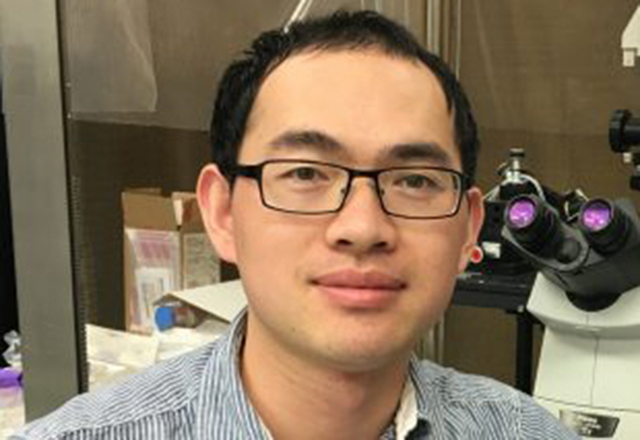
Junhua Yang
Paul Ehrlich Award
Please describe your research discovery.
Local acidosis causes tissue damage, and pain and is one of the hallmarks of ischemia, cancer and inflammation. However, the molecular mechanisms of the cellular response to acid are not fully understood. Besides the cation-conducting, acid-sensing ion channels (ASICs), the acid also activates a chloride (Cl−) conductance in a wide range of mammalian cells. Although the electrophysiological properties of the proton-activated Cl− channel have been described in detail, its molecular identity has remained elusive. This gap makes it impossible to elucidate its precise biological function and potential contributions to the pathogenesis of acidosis-related diseases.
Taking advantage of the powerful functional genomics screen established in our lab, we identified a novel membrane protein, named PAC (also known as TMEM206), as the proton-activated Cl− channel. PAC mRNA is expressed in diverse tissues, with the highest level detected in the brain. Knockout of mouse PAC abolishes the channel activity in neurons and protects them from acid-induced cell death. Importantly, PAC KO mice exhibited significantly smaller brain infarct volume when subjected to a middle cerebral artery occlusion (MCAO) stroke model. Therefore, PAC may represent a potential drug target for stroke and other acidosis-associated diseases.
This work has been done in the laboratory of Zhaozhu Qiu, Ph.D., in the Department of Physiology.
Why did you choose Johns Hopkins for your work?
Johns Hopkins has a highly collaborative and supportive scientific environment and world-class biomedical research. It has a longstanding commitment to career advancement for postdocs.
What does receiving this award mean to you personally and professionally? Do you have any connection with the particular award you received?
It is truly a great honor for me to be a recipient of the Paul Ehrlich Research Award. It is also a great motivator for me to continue my research and eventually lead my own scientific career.
What contributed to your project's success?
I am fortunate to say that my past scientific achievements, which were acquired not only through my passion and dedication to science but also under the excellent guidance and unfailing support of my exceptional mentor, Dr. Qiu. The Qiu Lab has a dynamic young group of intellectually-charged researchers and a highly stimulating environment that are extremely interactive and always supportive. I certainly would not have been able to do this alone and am grateful for everyone in the lab.
What thoughts do you have about Young Investigators’ Day itself, as a celebration of the roles students and fellows play in research at Johns Hopkins?
Young Investigators’ Day recognizes and highlights the contributions of students and fellows, and encourages them to pursue their scientific achievements in the future.
What has been your best/most memorable experience while at Johns Hopkins?
I have been working at Hopkins for more than four years. There are so many exciting and excellent moments such as figuring out the important scientific questions, the acceptance of our papers, and collaboration with wonderful people. After the tragic loss of one of the best colleagues and friends in the lab, I would like to appreciate that every day in the lab is the most memorable experience.
What are your plans over the next year or so?
I am turning the fifth year of my postdoctoral research. I am going to finish up current projects and look for a faculty position to start my independent research career.
Tell us something interesting about yourself.
I really enjoy being with my wife and kids in my free time. Crab hunting with the kids along the coast is my favorite thing here.
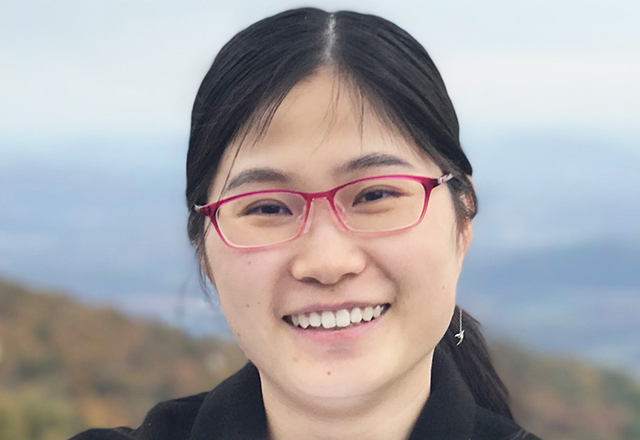
Yue Yuan
Albert Lehninger Award
Please describe your research discovery.
Unidirectional energy-dependent drug efflux mediated by cellular membrane proteins results in the failure of many anti-cancer chemotherapeutic agents. One strategy to enhance tumor retention of imaging agents, or anti-cancer drugs, is designing probes that undergo a tumor-specific enzymatic reaction that prevents them from being pumped out of the cell. In the Bulte lab, we used a rational design approach to develop a cell-penetrating, small molecule probe — Olsa-RVRR — which consists of the anti-cancer agent olsalazine (Olsa), conjugated to the furin-targeted peptide RVRR. By virtue of a biologically compatible condensation reaction, Olsa-RVRR monomers can be subjected to furin-induced intracellular condensation to form CEST MRI-detectable and therapeutic nanoparticles (Olsa-NPs) in targeted tumor cells. Hence, our work provides a potential platform for imaging tumor aggressiveness, drug accumulation and therapeutic response.
Why did you choose Johns Hopkins for your work?
Johns Hopkins greatly attracted me because of its world-class medical research, outstanding scientists, and top-notch facilities. And Dr. Bulte is one of the fabulous scientists in the molecular imaging field.
What does receiving this award mean to you personally and professionally? Do you have any connection with the particular award you received?
As a biochemist, I feel so honored and grateful to receive this Albert Lehninger Young Investigator Award. It not only provides a validation of my research, but also encourages me to be better in the future by following the example of Dr. Lehninger.
What contributed to your project's success?
There were three major factors that contributed to the project’s success: encouragement and guidance provided by my mentor Dr. Bulte; continuous support by the Pearl and Yueh-Heng Yang Foundation; and advanced resources at Johns Hopkins.
What thoughts do you have about Young Investigators’ Day itself, as a celebration of the roles students and fellows play in research at Johns Hopkins?
Young Investigators’ Day provides a very important stage for recognizing and motivating trainees at Hopkins. It also offers a great opportunity for the internal collaboration among these young scientists.
What has been your best/most memorable experience while at Johns Hopkins?
Working in the Bulte Lab and at Johns Hopkins has been a very memorable experience, in general. Outside of work, we recently had our first baby, which is probably the most memorable experience.
What are your plans over the next year or so?
I am planning to be a principal investigator and to start my own lab.
Tell us something interesting about yourself.
I enjoy watching movies and writing poems in my free time.

Chen Zhao
Bae Gyo Jung Award
Please describe your research discovery.
Macrophages are a class of innate immune cells that play essential roles in the progression of a variety of major human diseases. My research project is to build multiscale computational models to mechanistically simulate and investigate the role of macrophages, especially their phenotypic polarization, in the regulation of blood vessel formation, inflammation and immune response in disease settings such as cancer and peripheral arterial disease. These data-driven computational platforms that I built were used to identify and evaluate novel therapeutic strategies, with the potential to improve disease outcomes in patients. My research adviser is Aleksander S. Popel, Ph.D., in the Department of Biomedical Engineering.
Why did you choose Johns Hopkins for your work?
Johns Hopkins has the best biomedical engineering program in the country and is particularly well known for its top-notch interdisciplinary research in biomedicine, which I believe is crucial for the training of future innovative biomedical engineers.
What does receiving this award mean to you personally and professionally? Do you have any connection with the particular award you received?
I am truly honored to receive this award, and I consider it an exciting acknowledgement that will motivate me to continue my future research in the field of translational systems biology with a focus on disease modeling and simulation.
What contributed to your project's success?
The inspiring advice, encouragement and mentorship from my adviser, Dr. Popel, are definitely crucial to the success of my research projects. I am also very fortunate to be working with a group of amazing lab colleagues with diverse backgrounds and training, as well as several exceptional collaborators at other institutions. Last but not the least, I want to thank my family for their support, especially my wife, who always had my back throughout my entire Ph.D. journey.
What are your plans over the next year or so?
I will finish up my current projects and graduate, and I look forward to starting the next chapter of my career in the field of translational modeling and simulation soon.
